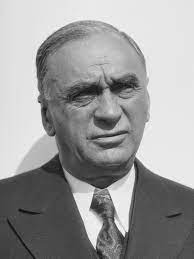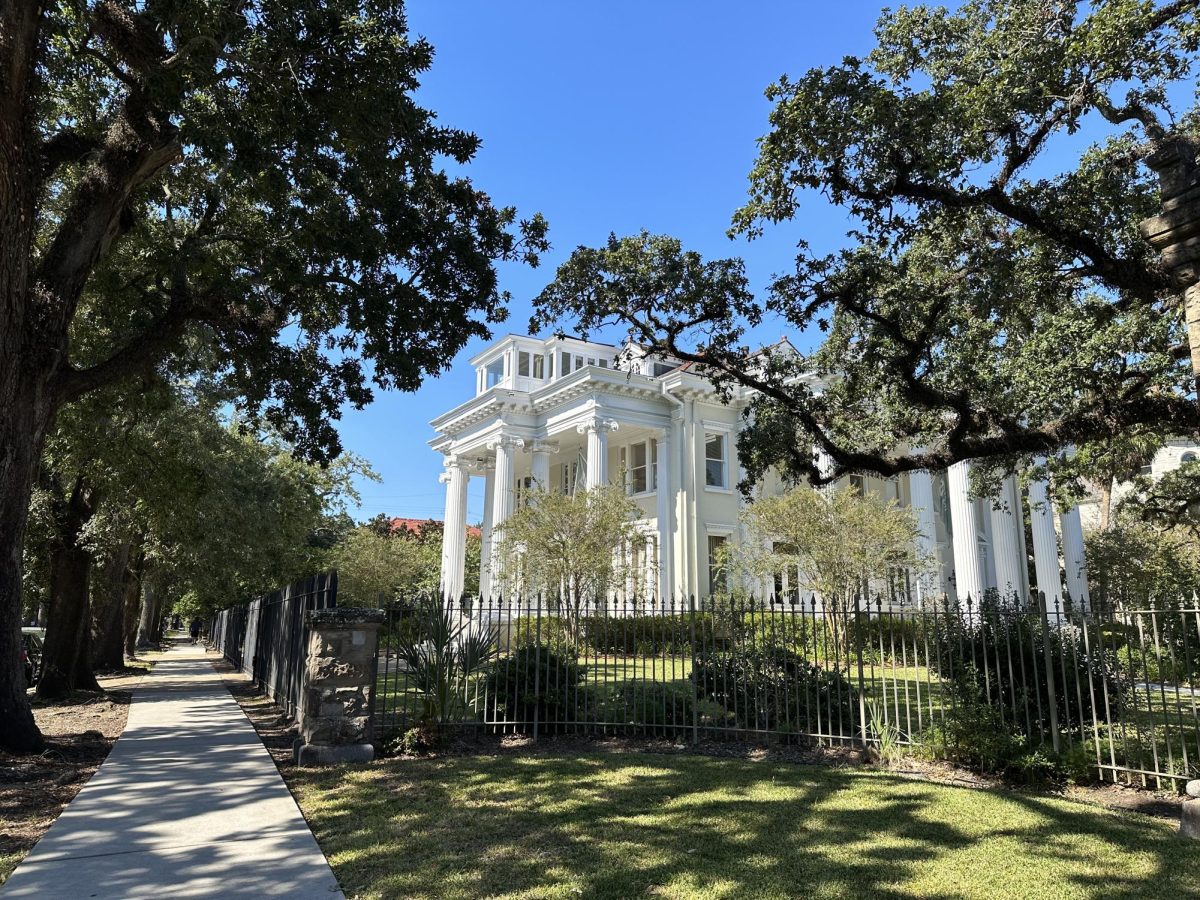Tulane University’s presidential residence, located on St. Charles Avenue, is a three-story, plantation-style home tucked securely behind the manned gatehouses of Audubon Place. A manicured lawn surrounds the white home, adorned with ornate columns at both entrances.
But the history behind the house is not so picturesque.
It belonged to Schmuel Davidovich, who was born in the Russian empire in 1877, came to New Orleans, changed his name to Samuel Zemurray and later organized two coups in Latin America and changed the political landscape of the region forever.
Then he bought the St. Charles home and became a large benefactor for Tulane.
“He was the American Dream,” Andrew Ward, an international development professor at Tulane, said. “He was a person who saw an opportunity and, like a hungry dog with a bone, never let go. He was diligent, and he was ruthless and he was a person who is largely unknown.”

Building a banana empire
When he arrived in America, Zemurray noticed rotting bananas on the side of roads. Seeing a business opportunity in the decaying yellow fruits, he began selling them. On his first investment, he made $35. Soon after, he contracted with the United Fruit Company to sell bananas on a larger scale.
Relentless in his business ambitions, Zemurray looked to Latin America to build his banana-based empire. He bought land for $200,000 in Honduras and founded the Cuyamel Fruit company in 1910. But he saw more money beyond the realm of legal business practices, so Zemurray made special arrangements with locals to avoid paying taxes.
History professor Justin Wolfe said that, as a “rough and tumble Russian Jew,” Zemurray was not welcome in elite New Orleans society, even among the wealthy Jewish community. Instead, he joined social clubs in Honduras and became part of their social scene.
But policies in Honduras were shifting away from Zemurray’s interests. In an effort to pay back debts to European countries, the country planned to impose new taxes. There was also a new push from the U.S. secretary of state, J.P. Morgan, to overturn Zemurray’s dealings.
Not interested in these less favorable tax agreements, Zemurray took a radical step: he organized an overthrow of the government.
The plan was simple. With the help of mercenaries, Guy “Machine Gun” Molony and Lee Christmas, Zemurray lured the secret service agents sent to monitor him away to a fake party. Then, the mercenaries sailed via Lake Pontchartrain in a former U.S. Navy vessel to Honduras with exiled former Honduran president and friend of Zemurray, Manuel Bonilla.
Armed with a machine gun, a case of rifles and 3,000 rounds of ammunition, the men overthrew the local Honduran government in just six weeks.
With Bonilla reinstated as president, Zemurray gained even more land concessions and a much more favorable tax arrangement — nothing owed for 25 years.
Wolfe said that Zemurray capitalized on what was already a politically tumultuous period in Honduran history for the benefit of his economic, political and social circles.
In the early 1900s, political conflict in Honduras would exist with or without Zemurray, Wolfe said. “Zemurray provides, essentially, an economic means and a commercial means to facilitate the side that he favors.”
But Zemurray’s actions also denied the people of Honduras their democratic rights in the name of the banana business.
“Any external power,” Ward said, who meddles with the will of the people, is “literally an enemy of the people.”
With Zemurray as president, the United Fruit Company swelled to an empire. The company owned 3 million acres of land, 1,500 miles of railroad, 15 hospitals and 237 schools. Zemurray became a prominent philanthropist, donating the money to create, among other initiatives, a four-year inter-American agricultural school in Honduras, the New School for Social Research in New York City and New Orleans’ first charity hospital for Black women.
Wolfe said that Zemurray’s coup laid the political foundations for what would allow the United Fruit Company to enter and dominate the Honduran agricultural economy, creating what would later be coined a “banana republic.”
“The effects of [Zemurray’s coup] were, I think, far less important, than the role of the global economic power that United Fruit became and the growing intensity of U.S. interest in the region with the Cold War,” Wolfe said.
Zemurray legacy on campus
Zemurray took his fortune in part from the hands of Hondurans, and a good portion ended up on Tulane’s campus.
Zemurray’s son attended Tulane before he was killed in a plane crash during World War II. Perhaps motivated by grief, Zemurray invested $1 million in Tulane, including donations that would create the School of Public Health and Tropical Medicine. In 1917, he bought the house that would become Tulane’s President’s House.
The Zemurray legacy perseveres prominently on Tulane’s campus. The Roger Thayer Stone Center for Latin American Studies was named after his daughter Doris Zemurray Stone’s late husband. Hundreds of students pass by the Zemurray Pavilion at the Décou-Labat Residences every day, and few have focused the same attention to Zemurray as they have to other controversial figures of Tulane’s past.
The Zemurray Foundation made 30 grants last year, including donations to the New Orleans Museum of Art and Audubon Nature Institute. Earlier this year, the foundation donated $1.3 million to the Stone Center to establish two endowments to support the study of Latin American indigenous languages and art history.
“I’m tremendously grateful to the Zemurray Foundation for its major role in ensuring the Stone Center’s place as one of the world’s leading academic hubs of Latin American studies,” President Michael Fitts said to Tulane News.
“It’s vital that every Tulanian knows that there is a direct connection between their collegiate experience and the current situation in Central America,” Ward said. “We’re not walking in the shadow of history.
“It’s not something that’s distant, remote and removed. It still has control over many aspects of our lives.”



Leave a Comment